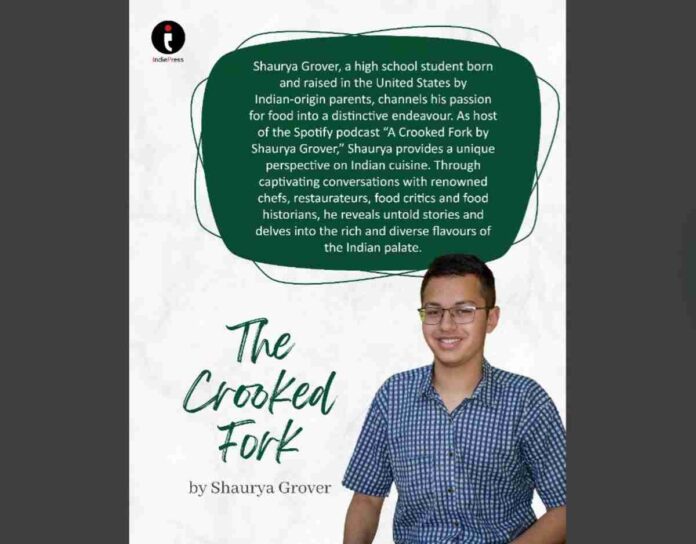Food is more than just sustenance—it’s a story, a history, and a cultural identity shaped by time and influence. In The Crooked Fork, author Shaurya Grover embarks on a fascinating journey, unraveling the intricate histories of some of the most iconic dishes associated with Indian cuisine. Through an insightful exploration, he challenges the very idea of authenticity and highlights how centuries of migration, trade, and colonization have shaped the culinary landscape we often take for granted. This book not only traces the evolution of these beloved dishes but also prompts a deeper reflection on how history influences our understanding of food and identity.
1. Could you give a brief synopsis of your book and the main issues it tackles in the modern world?
This book explores the origins and transformations of six fundamental dishes, along with a few additional ones, traditionally linked to Indian cuisine. It questions the notion of authenticity by investigating how these foods have evolved over time. The stories have been compiled from publicly available sources, providing a well-researched yet engaging perspective on the history of Indian culinary traditions.
2. What specifically motivated you to write this book, and what particular knowledge or experiences do you bring to the topic?
As a high school student of Indian descent, born and raised in the United States, I have always been fascinated by food and the diverse cuisines of South Asia. This passion led me to start a podcast three years ago, where I had the privilege of interviewing Michelin-starred chefs, renowned restaurateurs, food historians, and critics. These conversations inspired me to document the fascinating histories of signature Indian dishes, shedding light on how economic and historical trends shape the food we associate with cultural identity today.
3. Could you outline some of the most important lessons or revelations that readers should anticipate from your book?
Many of the dishes we recognize as staples in Indian cuisine—especially those found in typical North Indian restaurants—are actually a product of numerous influences. These range from ancient Vedic traditions and regional geography to significant external impacts from Central Asia, the Middle East, Portuguese traders, and British colonial rule. Additionally, the emergence of Indian restaurants and their menus was influenced by historical trends, often finding their way into the hands of Bangladeshi restaurateurs who eventually established Indo-Pak dining establishments worldwide.
4. Could you provide any case studies or real-world examples from your book that exemplify the ideas you talk about?
For instance, red chili powder is often considered an essential spice in Indian cooking. However, it was introduced to India by the Portuguese in the 1700s and only became widely used in North Indian cuisine by the mid-1800s. This example highlights how food evolves over time, incorporating foreign influences to become an integral part of local culinary traditions.
5. When creating this book, did you face any special difficulties or barriers? If so, how did you get beyond them?
As an eleventh-grade student with a demanding academic curriculum, I had to juggle multiple commitments, including schoolwork, sports, extracurricular activities, my podcast, and the extensive research and writing process for this book. Managing my time efficiently and staying committed to my passion for food helped me successfully bring this project to life.
6. What do you think readers will learn from your book, and how do you see it improving their lives?
In today’s world, discussions about identity—whether national, cultural, religious, or gender-related—are more relevant than ever. While The Crooked Fork is designed to be an engaging and enjoyable read, featuring recipes contributed by world-renowned chefs, it also aims to shed light on the fluid nature of identity. By understanding how food is shaped by historical influences, readers may gain a broader perspective on the complexities of cultural heritage and authenticity.
7. How does your book stay relevant and flexible for readers over time in a world that is changing so quickly?
The historical narratives and key insights in this book remain timeless. While recipes and food trends continue to evolve, The Crooked Fork serves as a valuable record of how Indian cuisine has developed up to this point. It provides context for the ongoing transformation of food culture, preserving a snapshot of history that readers can return to for years to come.
— Get Your Copy Today on Amazon!

